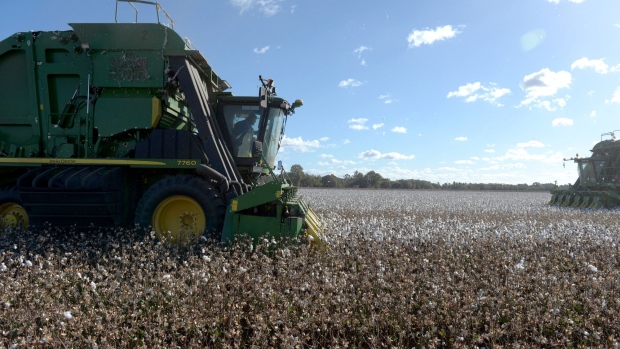Nouriel Roubini warns of L-shaped 'Greater Depression'
Iva Poshnjari, BNN Bloomberg May 5, 2020
The Close Economist who predicted last financial crisis warns of coming 'Greater Depression'
Nouriel Roubini, NYU professor and former White House senior economist under U.S. President Clinton, joins BNN Bloomberg to discuss why he predicts a depression will hit the global economy in the middle of the decade.
Economist who predicted last financial crisis warns of coming 'Greater Depression'
Famed economist Nouriel Roubini, who predicted the 2008 financial crisis, is calling for a global depression in the middle of the decade.
In an interview with BNN Bloomberg's Amanda Lang Tuesday, the author and New York University economist says the most likely economic scenario "is that of a "U-shaped recovery" and "there is also a risk of an L, what I call a greater depression, that's my baseline for the rest of the decade, but not this year."
He said that as a result of the COVID-19 pandemic, both households and corporations will have to spend less and save more,causing a global investment slump and a global savings glut.
"That's a recipe for a very anemic recovery of the U.S., Canada, of the global economy," he said.
When asked if there was anything governments can do to stop a depression, Roubini said "unfortunately, I fear there are some major trends…what I call the 10 deadly Ds that are going lead us to a deadly depression sometime later in this decade. Only a matter of when – not whether."
Roubini's deadly Ds include debt, deficits, deglobalization, currency devaluation, and disruption in the environment - all of which he argues will push the global economy into a depression.
He said that even with monetary and fiscal stimulus, "the train wreck is a slow moving one," and that "policies cannot do much about it. They will actually exacerbate the debt imbalances" as "rising debt levels will explode."
On the Canadian economy, Roubini notes the country's position as fundamentally resilient and diversified, but not immune to the drop in oil prices.
Roubini said he sees up to a six-per-cent contraction in GDP in Canada this year, and also sees continued weakness for the U.S.
Notably, he criticizes U.S. equity investors who might be thinking: 'Even if earnings suck for the rest of the year,' it doesn't matter because a zero-rate policy environment remains favourable.
"The U.S. stock market is pricing in a V-shaped recovery, but I think it's delusional," he said.
Trump says jobs report isn't surprising and he's not to blame
READ THE BABBLING OF A MAD MAN IN THE WHITE HOUSE TOPSY TURVEY HE IS NOT TO BLAME AND HE STOPPED THE ECONOMY AND HE CAN TURN IT BACK ON......SERIOUSLY

President Donald Trump said a government report Friday showing massive U.S. job losses from the coronavirus outbreak isn’t a surprise and that he shouldn’t be blamed for it.
“It’s fully expected. There’s no surprise,” he said on “Fox & Friends,” where he was being interviewed as the report was released. “Somebody said, ‘Oh, look at this.’ Well, even the Democrats aren’t blaming me for that, but what I can do is I’ll bring it back.”
The Labor Department announced Friday that the U.S. lost 20.5 million jobs in April, as the nation enacted social-distancing practices that collapsed the economy.
The unemployment rate tripled to 14.7 per cent. Trump expressed confidence that employment numbers could snap back quickly, given the nature of the shutdown.
“We artificially closed it. Those jobs will all be back, and they’ll be back very soon and next year we’re going to have a phenomenal year. People are ready to go. We’ve got to get it open, safely. People are ready to go,” he said.
Trump has been criticized for responding slowly to the virus. Federal mitigation measures only ramped up in mid-March in the U.S., which now has the world’s highest confirmed case total and death toll.
Without mitigation measures that impacted the economy, such as closing businesses and schools and ordering people to stay at home, two million people or more would have died from the virus spread, Trump said.
“We were blowing away everybody. We were the envy of the world and then they came in and they explained it and they said, ‘Sir, you have to turn it off,’” Trump said Friday. “Nobody ever heard of a thing like this, but they were right.”







